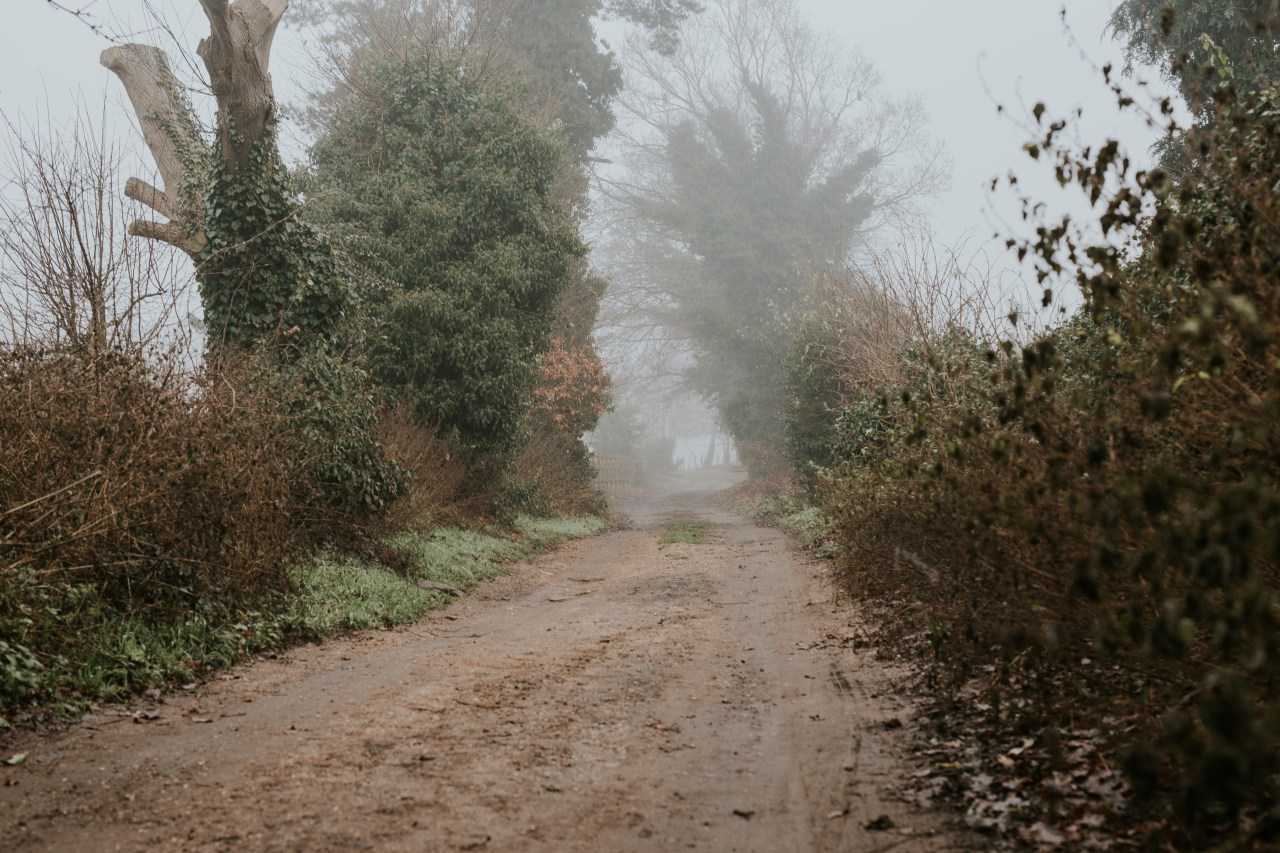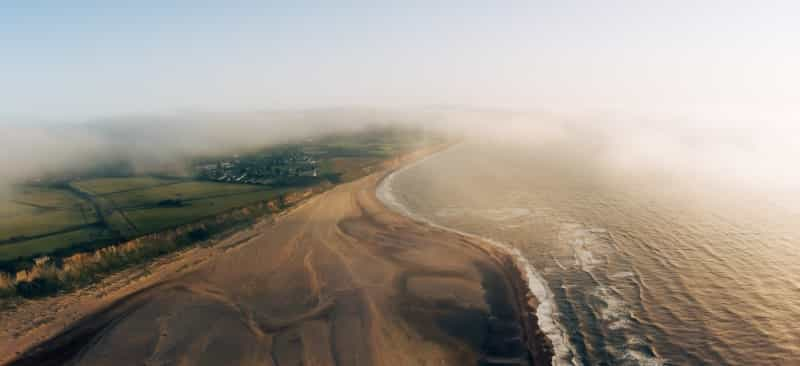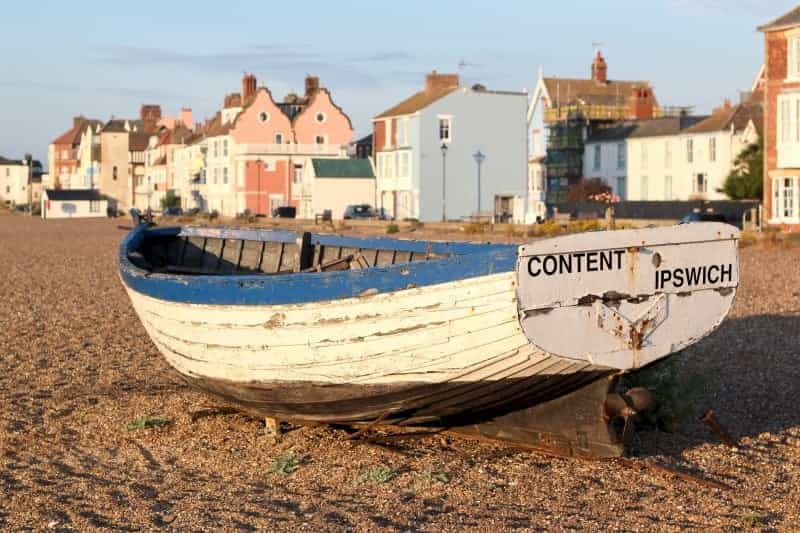7 Top Places To Walk In Suffolk
River estuary rambles, hiking the purple-clad heaths or mooching around the coastal marshes – Suffolk is a great place to get out for a walk.
Follow in the footsteps of ancient kings, hunters and sailors, and explore landscapes that have inspired some of Britain’s greatest artists (and perhaps even attracted visitors from outer space…) with this selection of the top places to walk in Suffolk.

Walks around Sutton Hoo
Sutton Hoo is the site where Anglo Saxon royals are buried and the ‘first page in English history’ was written. The mysterious mounds, of which there are 18, are thought to contain the remains of Rædwald, the first Christian king of East Anglia, who ruled these lands in the seventh century. The National Trust site has a variety of walks with signposted trails, and the main archaeological area can be reached by a half-mile accessible path.
You can take circular walks of varying lengths through the fields and farmland, follow a three-mile walking route taking in Ferry Cliff (where the fossils of hooved mammals and rodents have been discovered), or continue to the River Deben, from where the burial ship that lies beneath one of the mounds was dragged. Sutton Hoo is an atmospheric place: you could quite easily imagine being in a scene from a Tolkein novel when the mists roll in, or – if the sun’s out and you’re with the kids - Teletubby land.
Sutton Hoo is one of the best-known places to visit in Suffolk. If you’re seeking inspiration for what else to do while you’re visiting, check out our guide to the best things to do in Suffolk.
Rendlesham Forest
More mysteries await in Rendlesham Forest, but of an altogether otherworldly variety. This 1,500-acre tract of woodland near the Suffolk coast is in an Area of Outstanding Natural Beauty and has walks that have become known as the ‘UFO Trails’. That’s because of reported sightings of strange lights in the trees by members of the US Airforce, based at nearby RAF Woodbridge, in 1980.
Whatever the truth of it, make your own deductions when walking in the forest. Information boards along a three-mile trail describe the reports and there’s a big UFO sculpture based on the original witness accounts to fire the imagination. Aside from the alien attractions, Rendlesham Forest is a lovely area for walks in its own right. There are play areas for the kids and longer walks on the named Phoenix and Tang Trails.
Stargaze at a campsite near Woodbridge.
The Suffolk Coast Path & Minsmere Nature Reserve
RSPB Minsmere is a nature reserve that stretches to the National Trust site of Dunwich Heath and its beach. Part of the wider Suffolk Coast and Heaths Area of Natural Beauty, you can park in any of the main visitor car parks and take numerous walks through the glorious purple heather in summer to the shingle shoreline. There are hides throughout the birdwatching site that overlook the wetlands with a canopy platform built up into the trees. The beach is a long shingle one with a collection of fishermen’s huts harking to the days when Dunwich village on the cliffs above was a busy harbour.
For walkers, this area is a popular stretch of the 60-mile Suffolk Coast Path, which passes the best beaches on the coastline. The route continues on its journey from Felixstowe to Lowestoft south through Dunwich Forest and the Walberswick Nature Reserve and onto the coastal communities of Southwold and Kessingland.

Search seaside campsites near Lowestoft.
The Sailor’s Path - Aldeburgh to Snape
Named for obvious reasons, this trail follows the route once used by fisherfolk to make their way from Snape to Aldeburgh. The path runs through the River Alde Valley with views of estuary, marshland and striking heath. A walk starting at the 2,000-year-old village of Snape, now renowned for its artsy vibe, follows on to Snape Maltings. Quite the local landmark, the Maltings was built in the mid-19th century to load malt barley from the railway onto barges for shipping to the breweries of London.
Leaving this industrial heritage behind, the Sailor’s Path continues past the Alde mudflats and marshes where those traversing their way home from the fishing boats once stopped to bag a duck or a goose for supper. Snape Warren Nature Reserve is now a site protected by the RSPB, so the only wildfowl shooting permitted is that with a camera. The walk ends in Aldeburgh, which retains a small fishing fleet in its harbour – though most of the craft these days are of the pleasure type on which you can take estuary cruises.
Browse holiday sites near Saxmundham, a few miles from the Suffolk coast.

The Warrener’s Walk in Mildenhall Woods
From the Middle Ages through to the middle of the 20th century, warrening (hunting rabbits for meat and fur) was a big part of the agricultural landscape of Suffolk. Mildenhall Woods, a 20-minute drive from Bury St Edmunds, lies in the Brecks – an area once known for rabbit farming on a commercial scale.
The Warrener’s Walk is a two-mile trail through towering Scots Pines and deciduous woodland. The irony at Mildenhall Woods, however, is that you’ll probably not encounter any bunnies. When the Forestry Commission took over the site in the 1930s, rabbits were considered too much of a threat to freshly planted tree seedlings to be allowed to run rampant. There’s plenty of wildlife to spot still though, as squirrels scamper up trees that are home to great tits and goldcrests. Just don’t tramp the trail too friskily or you might lose a boot down the miles of rabbit warrens that lie underfoot.
Browse places to stay near Bury Saint Edmunds.
Dedham to Flatford
This easy walk explores the border between Essex and Suffolk along the Stour Valley between Dedham and Flatford. The circular route passes through Suffolk countryside that inspired the works of John Constable.
You can start at the National Trust car park at Flatford, with signposts directing you to Dedham. The walk heads along riverbanks and passes through the RSPB protected nature reserve of Cattawade Marshes.
Once you arrive in Dedham, you’ll see its Mill and Willy Lott’s House, which feature in The Hay Wain, Constable’s best-known painting. A little further on, down Flatford Lane, is a kissing gate. A stile used to stand here, over which Constable would clamber on his walk to school. He later immortalised the spot in his Leaping Horse piece.
Ipswich and its surrounds make a good base to explore Constable Country. Search campsites in the Ipswich area.
Alton Water and Pin Mill
A few miles south of Ipswich, on the Shotley Peninsula (a stretch of land between the River Orwell and Stour estuaries), is Alton Water. The reservoir has several trails around its length and surrounding nature reserve to choose from. The full loop of the water stretches to eight miles along flat paths that are well maintained and popular with cyclists. There are plenty of places to pause along the way for a picnic.
Longer rambles can be taken by following footpaths south of the dam and picking up a section of the Stour and Orwell Walk to head near the coast. The trail reaches Pin Mill to take in coastal views of the mouth of the estuary and out to sea as ships enter the ports at Harwich and Felixstowe. The village was once home to Arthur Ransome, of Swallows and Amazons fame, and features in some of his earlier novels.
If exploring Suffolk with your four-legged companion is going to be a big part of your holiday, then read all about the best dog walks in Suffolk.
And if you want to take in the best sandy stretches on this part of the East Anglian coastline, you can find the definitive guide to the best beaches in Suffolk right here.